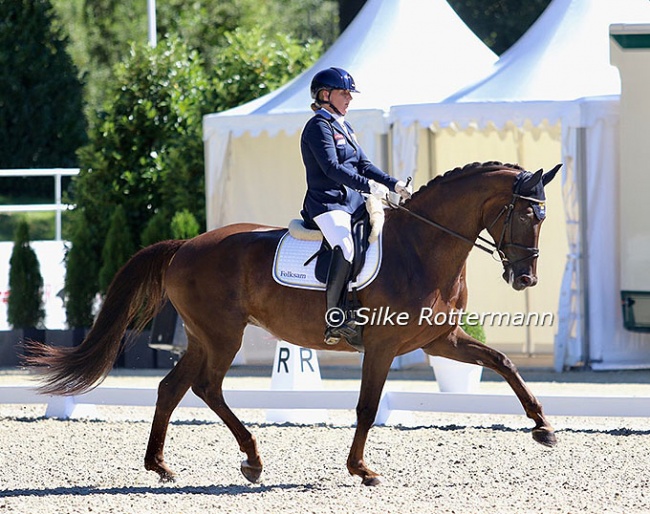
-- by Silke Rottermann for Eurodressage
In spring 2022 I attended the CPEDI Waregem in the west of Belgium which always attracts the best of the best of European para dressage at the beginning of a season. I was lucky that it was my Easter holidays and I had the luxury of also attending the training before the show itself started.
In competition many factors indicate the way a horse is usually trained, may it be the frame, the contact, the musculature etc.. However the training often gives a clearer picture about a rider’s approach to dressage, for example the way s/he structures a training session is most interesting to observe.
In Waregem a long legged mare caught my eye and because of the way she moved I had trouble taking them off again. I just stood there and soaked up what was presented to me: No tense flying front-legs, no broken neck with a revealing musculature, no braced back, but I saw smooth quiet work of a calm, but eager horse.
It was spectacular, but in a very different meaning than this term usually has in dressage.
I talk of the Swedish bred mare Fabulous Fidelie who on that day restored my faith that classical riding will survive and still can succeed in the competition arena. After the Europeans in Riesenbeck in September, where the liver chestnut mare came 4th in the individual competition in Grade V and strongly contributed to Sweden’s Olympic qualification in the team championships, it seemed about time to get to know more about the aptly named equine lady and her breeder and rider Lena Malmström.
ED: Lena, you only appeared on the international para dressage scene in 2016 and onwards, but you are a true horsewoman whose life is dominated by these animals from early on.
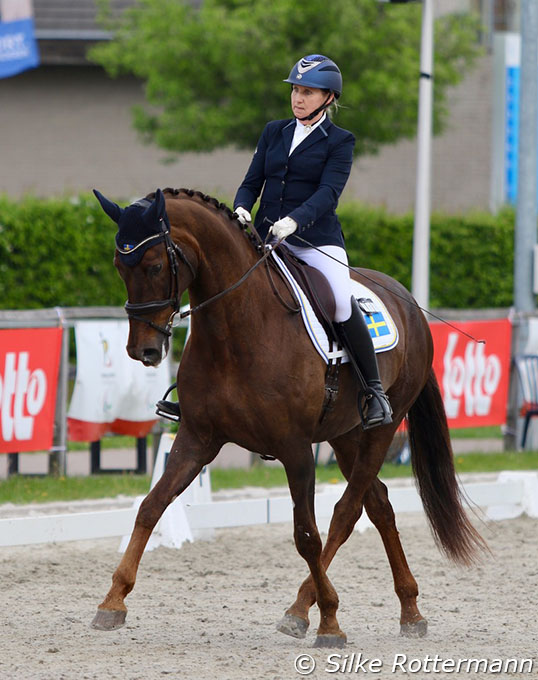
Initially I studied economy, but at the age of 23 I moved to Skåne, where I studied to become a stable manager at Flyinge (the then Swedish national stud). The first year we rode many young horses and learned a lot about different bloodlines. The second year we lived at Flyinge and that year Kyra Kyrlund came and we spent many hours watching her. Many words of wisdom went straight into my heart.
After finishing my studies at Flyinge, I worked full time as a stable manager for several years. But all the time I wanted to start my own breeding stable so I bought a little farm in the south of Sweden which I named „Que Sporthorses“. At the same time I worked in healthcare to support my family since I was a single mom of two boys, one of whom is wheelchair bound.
ED: Since your first appearance in international para dressage in 2016 you have competed on the Swedish team with two home-bred mares, Hotdream Que (by Quite Easy x Pontus) and your recent horse Fabulous Fidelie (by Floricello x Blue Hors Don Romantic). Both go back to your foundation mare, the 1993 born Pollitess (by Pontus x Lansiär) from the mare family 34 which still carries traditional Swedish bloodlines. After which principles do you run your breeding programme?
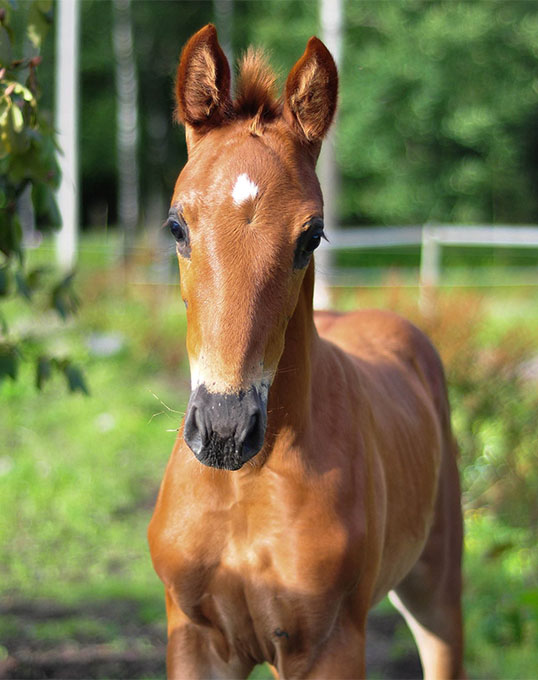
I am very particular about the stallion’s leg posture because I think it is very important to get healthy horses. An interesting reflection is that some horses are more prone to injury than others, so I simply don’t use them. Sometimes it’s hard to get information on how a stallions passes on his genes. In breeding you have to think longterm. My mares are from family 34, a family which is known for producing both jumping and dressage horses. I look for a good walk and canter since the trot can be developed the best. Good rideability is also important for me. Personally I like horses with a lot of elasticity, but not too big gaits and that are sensitive.
We have some really good breeders in Sweden who want to keep the sustainability which we have in our old Swedish bloodlines, but also understand the need for development. The veterinarian and breeder Lena Nyström gives us all tips about good stallions as she is always out and about, being up to date. She advised me to use Danciero to Fidelie’s dam and now Fidelie has a beautiful 3-year-old half brother.
ED: You bred Fabulous Fidelie in 2012 out of your mare Flingan, a daughter of your foundation mare Pollitess and by Blue Hors Don Romantic. Did she promise greatness from the beginning?

I have eight horses in total and six of them at home. I am the worst seller in the world because I love my horses too much and do not like to part with them.
My decision now is that I have to sell some of them before I breed more.
ED: Having watched you several times at CPEDI shows I got the impression your approach of riding is quite classical. Which trainers have stamped your equestrian attitude?
I trained with a Swedish judge, Mollis Persson, and I have trained with two Danish dressage trainers: Henrik Johanssen with his incredible feeling for communication and his well-conceived teaching methods as well as Jörn Wennegard-Lassen who was always very particular on suppleness. I also trained for the most amazing woman from Australia, Bonny Burgess, who has taught me a lot about horsemanship. Her feeling, softness and respect for our incredible horses is something that I admire a lot.

Last not least Stefan Jansson helped me with Fidelie in her younger years and therefore he has a special place in our hearts. He recently started in the World Cup in Herning with his home breed Zidney.
ED: It seems like Fabulous Fidelie is generally a horse who’s used to many things as she seems quite relaxed, sometimes serving as "friendly horse" at para competitions. What does her life at home and her training usually looks like?
LM: Fidelie is out grazing every day and she almost always has a horsey friend with her. Just before shows she is in the paddock on her own, but then she has company at night in the box next to her. She lives in an outdoor stable.
As we live near the forest we have a 15 minute walk there before any training. Usually we have a couple of days with jogging and working on throughness. Then we have one or two days with trainers and the rest of the week we ride in the forests, doing canter work and climbing. We work on different surfaces: on asphalt, grass, gravel, sand, but also on soft moss.
Fidelie gets fed in the morning at different times since it not always possible to have continuity on competitions. But usually between 7- 8.30 in the morning. She is generally good at coping with changes.
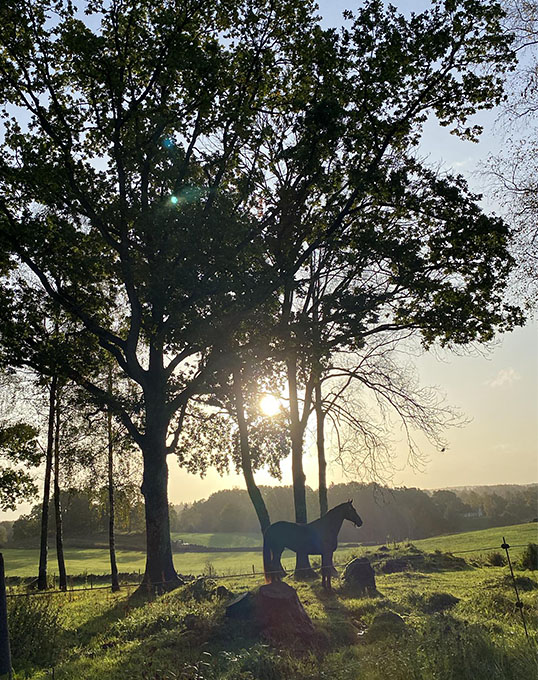
After breakfast Fidelie goes out and she has her lunch outside. In the afternoon we usually train and if there is still light outside, she can go out again. She loves to be groomed and she also has her own massage blanket and warming blanket. She often tells me when she wants to come in at night. Usually around seven o`clock.
ED: You compete in Grade V in para dressage, but you also show in the able-bodied classes in Sweden. What are your goals with Fabulous Fidelie with the Paralympics in Paris just around the corner?
LM: In Sweden we compete at PSG level, but we are training for higher standards. Fidelie is a smart horse and learns quickly. My main focus at the moment is suppleness. Before para competitions I don’t do much changes, but I focus more on the different movements and accuracy. I exercise the program, but don’t do heavy training.
There are so many talented riders in para dressage, so the competition is hard, it’s all in the details. I put a lot of energy in good communication with my horse and try to have invisible aids. Connection is everything. For me the most important thing is the partnership with the horse. In para dressage the connection with the horse is even more important and the horses seem to help the riders in the most incredible way.
It is an advantage that in general Fidelie travels incredibly well and likes it when we drive fast, only she hates queues. She then starts to jump about in the trailer. If there is a long queue, we have to get into the trailer and bribe her with treats. She seems to like to come to different places and she recognizes the other horses she often meets. But she doesn’t care if she is alone or with other horses.
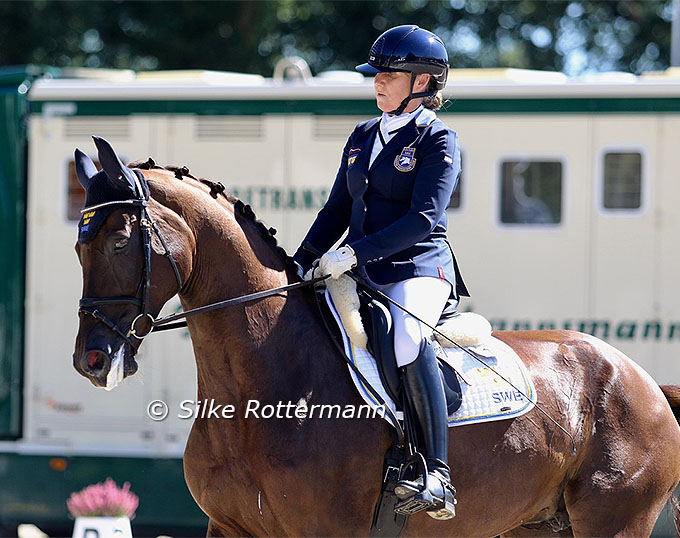
ED: Para dressage seems to become a cost intensive affair, but at the same time also seems to get more public recognition. Would it be desirable that para dressage gets a place at the famous CHIO in Aachen?
LM: I know money is important and can change a lot for a person. I hope the money question will not become a hindrance for para dressage, but there’s a risk.
I love it when we para riders participate together with the dressage and jumping riders in international championships. I absolutely think that Para dressage attracts a different audience and this also benefits dressage and jumping. I would of course love to see para sport at a venue like Aachen (which will now be the case at the 2026 World Championships which is going to include para dressage).
Photos © Silke Rottermann - Lena Malmstrom private collection
Related Links
Para Dressage at its Finest at 2022 CPEDI 3* Waregem
Michèle George Reigned Supreme in Grade V Individual Class - Another Gold for the Para Queen
The Netherlands Reign in Team Competition at 2023 European Para Championships
Swedish Para Dressage Squad for 2023 Named
Swedish Team Selected for 2022 World Para Dressage Championships
Scores: 2021 Paralympic Games